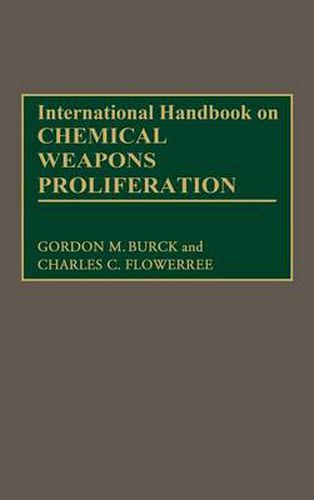Readings Newsletter
Become a Readings Member to make your shopping experience even easier.
Sign in or sign up for free!
You’re not far away from qualifying for FREE standard shipping within Australia
You’ve qualified for FREE standard shipping within Australia
The cart is loading…






The spread of the poor man’s nuclear weapon , as chemical weapons are termed, is given a detailed examination in this handbook. Gordon M. Burck and Charles C. Flowerree systematically sift though the literature on each of 39 countries outside Europe and North America suspected of having or seeking chemical warfare capabilities. In each instance, conclusions are drawn as to the credibility of the reports and the nature of the CW capability that each country possesses. A full chapter looks at the use of chemical weapons in the Iran-Iraq War, especially timely in light of Iraq’s CW capability in the 1991 Persian Gulf war. Other sections provide background information on chemical weapons manufacturing, amounts needed for militarily significant capability, and the possibility of delivering CW agents by long-range delivery systems. The editors’ analysis of past and current efforts to stem CW proliferation, including political measures, export contorls, and arms control negotiations, leads them to conclude that the only effective means of arresting chemical weapons proliferation would be a verifiable multi-lateral convention banning the possession and manufacture of chemical weapons.
$9.00 standard shipping within Australia
FREE standard shipping within Australia for orders over $100.00
Express & International shipping calculated at checkout
The spread of the poor man’s nuclear weapon , as chemical weapons are termed, is given a detailed examination in this handbook. Gordon M. Burck and Charles C. Flowerree systematically sift though the literature on each of 39 countries outside Europe and North America suspected of having or seeking chemical warfare capabilities. In each instance, conclusions are drawn as to the credibility of the reports and the nature of the CW capability that each country possesses. A full chapter looks at the use of chemical weapons in the Iran-Iraq War, especially timely in light of Iraq’s CW capability in the 1991 Persian Gulf war. Other sections provide background information on chemical weapons manufacturing, amounts needed for militarily significant capability, and the possibility of delivering CW agents by long-range delivery systems. The editors’ analysis of past and current efforts to stem CW proliferation, including political measures, export contorls, and arms control negotiations, leads them to conclude that the only effective means of arresting chemical weapons proliferation would be a verifiable multi-lateral convention banning the possession and manufacture of chemical weapons.